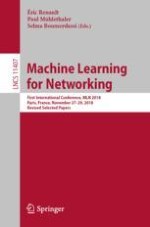2019 | OriginalPaper | Buchkapitel
Towards a Better Compromise Between Shallow and Deep CNN for Binary Classification Problems of Unstructured Data
verfasst von : Khadoudja Ghanem
Erschienen in: Machine Learning for Networking
Aktivieren Sie unsere intelligente Suche, um passende Fachinhalte oder Patente zu finden.
Wählen Sie Textabschnitte aus um mit Künstlicher Intelligenz passenden Patente zu finden. powered by
Markieren Sie Textabschnitte, um KI-gestützt weitere passende Inhalte zu finden. powered by
